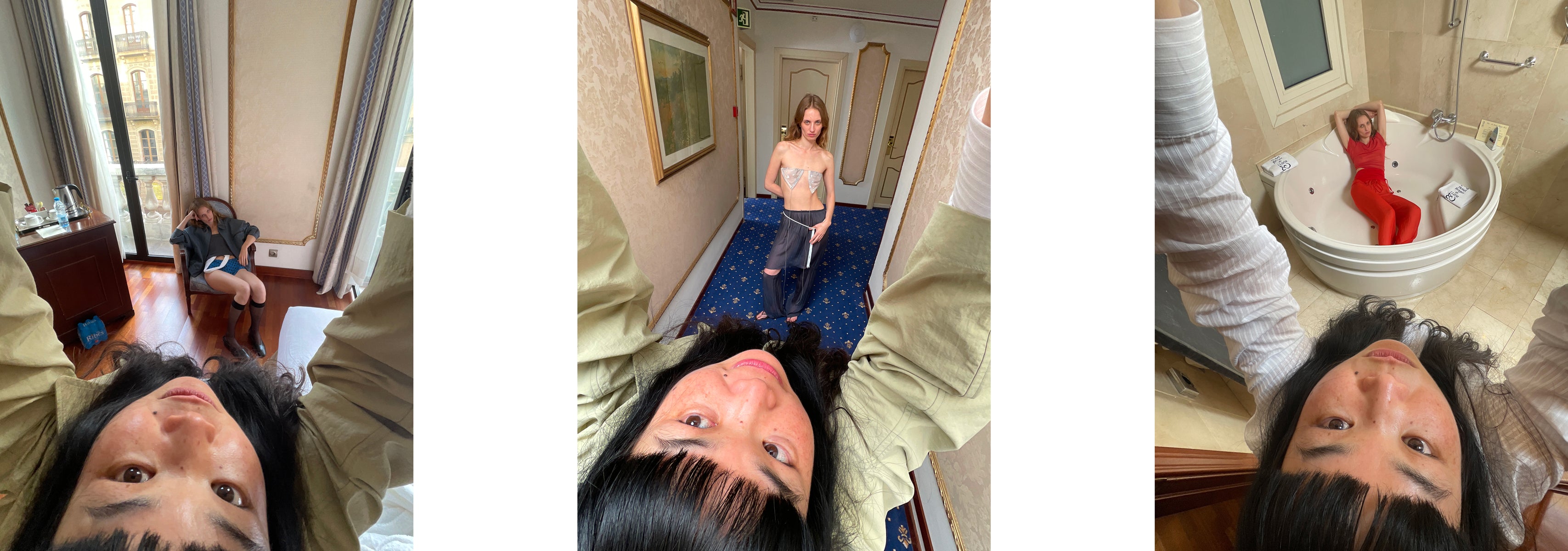Petra Collins by Fumiko Imano
Petra Collins by Fumiko Imano
April 4, 2025
We’ve long admired artist Fumiko Imano's work. In February 2025, we invited her to shoot Petra Collins for our Spring Summer campaign. Meeting her in person for the first time, we were captivated by her presence.
Her work creates a world where reality and illusion blur; you’re never quite sure what’s real and what’s not. Although protective of her privacy, her photographs carry a familiar warmth, just as she does.
Recently, she spoke with us about her artistic practice and visual language.
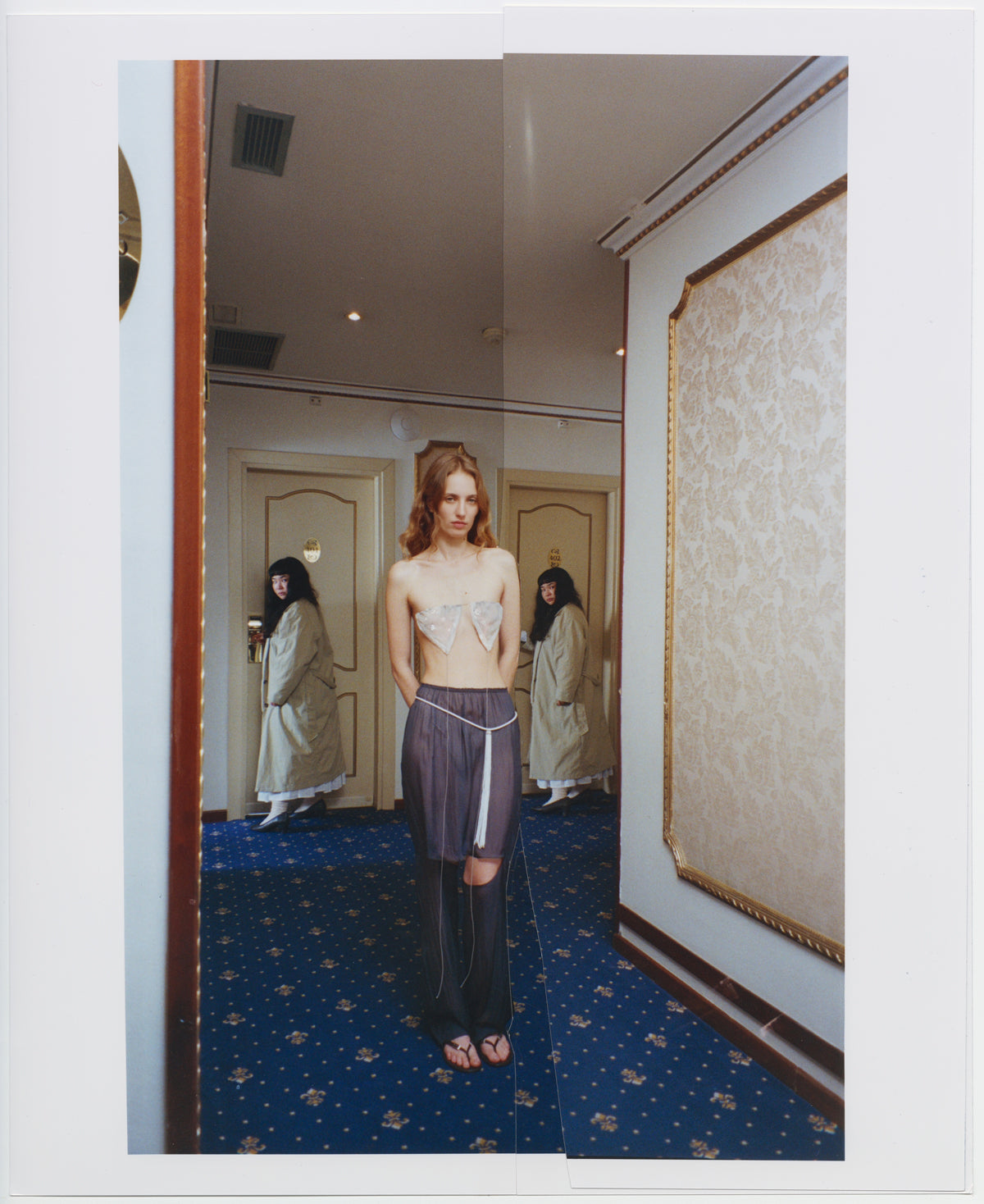
You studied fine arts and fashion photography. Can you tell us about your academic background and how it shaped your current practice?
I started a fine art course at Central Saint Martins in London because I wanted to do sculpture. I was concerned about what I was doing because the teachers gave us so much freedom with our practice. I began collecting people’s hair to make a dress and took pictures of a model with it to show it. At that time, I became interested in fashion photography, although it didn’t develop then. I felt lost and didn't know what to do. I also thought I wasn’t learning much in fine arts and realized being an artist was hard. At that point, I decided to switch to fashion photography at the London College of Fashion.
There, I realized I was very possessive about my work –everything had to be my own. I’m also quite shy, and fashion photography requires collaboration with models, stylists, hair and make-up artists, art directors, and more. Somehow, I couldn't do it, even though I wanted to pursue a career as a fashion photographer. I ended up doing self-portraits because I could be my model, do my makeup, and dress myself. At one point, my tutor suggested I return to fine arts because I couldn't collaborate with others. I was young and had this belief that everything had to come from me.
I worked on this possessiveness. It was hard, but I started helping a fashion designer after graduation. I enjoyed the studio environment a lot; so many things were going on at once. It made me appreciate the fashion industry.
You’ve created a very personal visual language with altered photos and self-portraits. Has this been part of your practice since the beginning?
When I was younger, I wanted to see what I looked like because I had a huge complex about my looks. It wasn’t necessarily about idealizing myself but more of a challenge. Later, when I was living in London, people used to tell me, "You are photogenic." I wanted to explore what that meant. Over time, it turned into a deeper reflection of, "Who am I?" It took me a long time to accept myself and say, "This is me." It began as a secret. No one knew I was taking self-portraits before I started to share. I was so scared.


When one looks at your early work, like the videos from 14 years ago on YouTube or photo books, they seem very personal and spontaneous. Were these improvised moments, or did you have an artistic intention?
I lived in the countryside with my parents and wanted to return to Europe but couldn't. I became hikikomori. I stayed in my room all day but wanted to be connected to the rest of the world. Sometimes, I made videos and was like, ‘’I'm here. Hello.’’ It started as something personal. It took me a long time to share my self-portraits publicly because I was so shy. My self-portraits were, and still are, something very intimate for me. I need time to decide if I want to show them publicly. When it comes to my work, if it's too personal, then I don't want to show it. When I take pictures, I don't want to show them immediately. I prefer to let them rest. It's like cheese and wine; they need time to mature. But with fashion shoots, I have to make quick decisions.
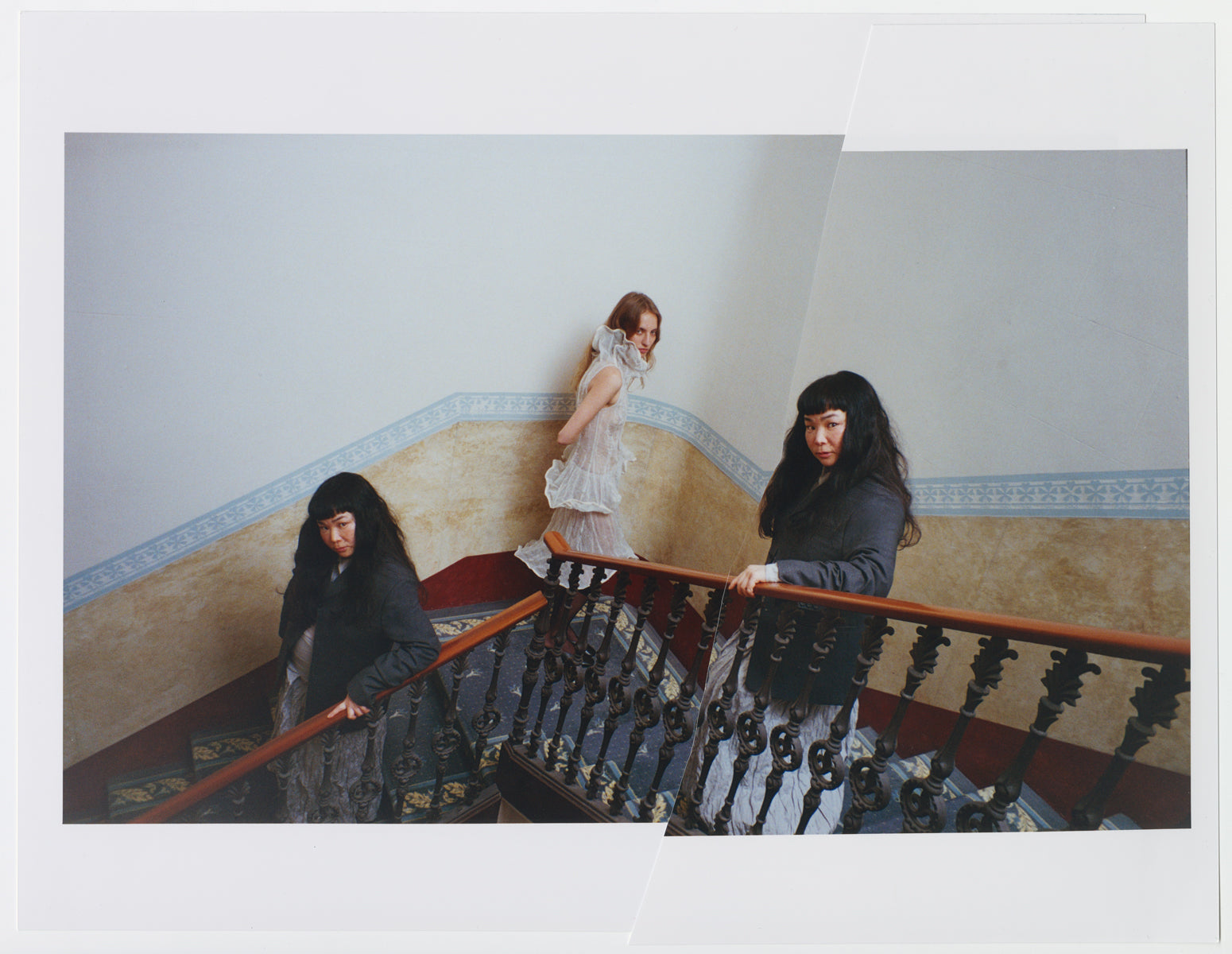
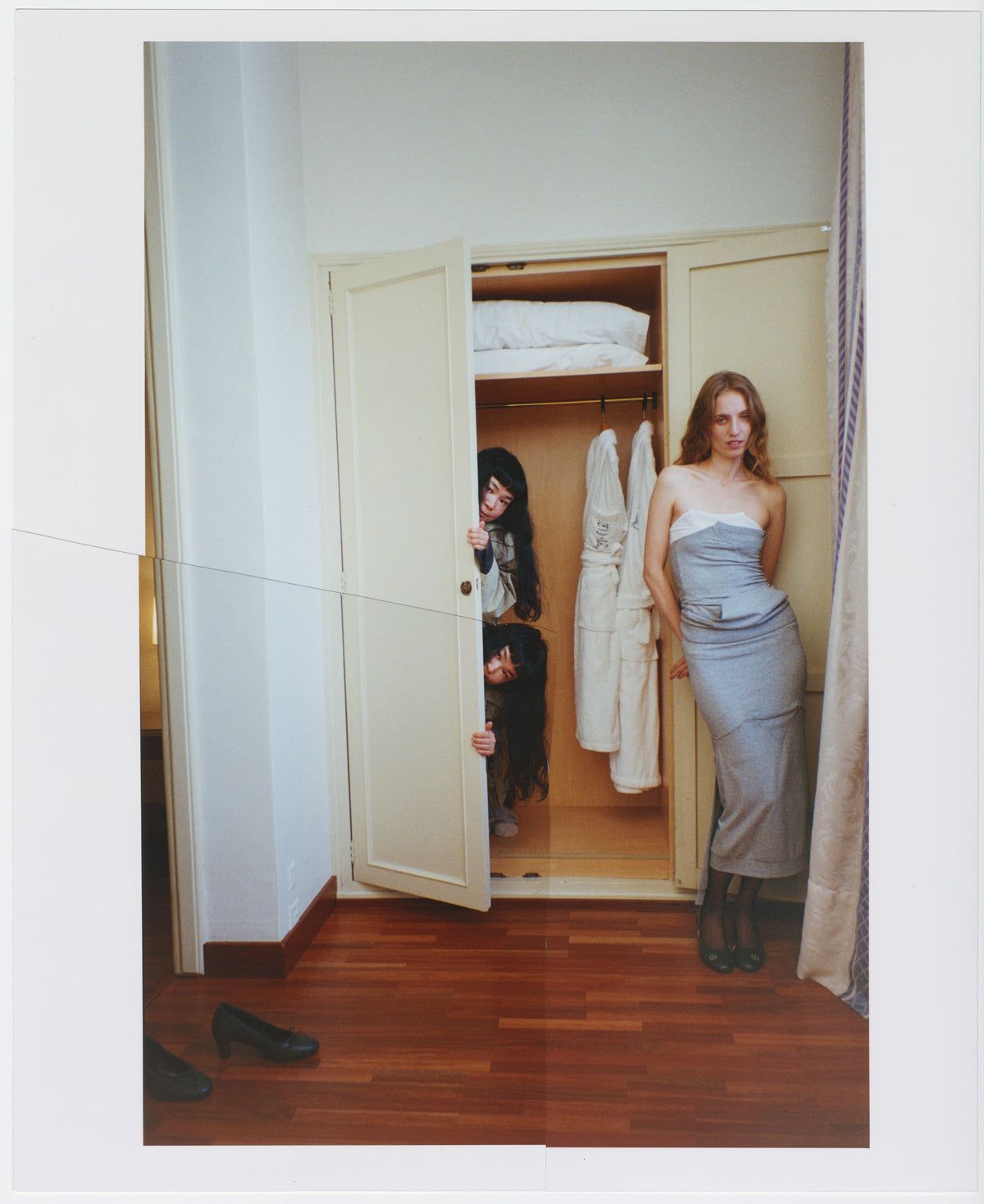
How did you start incorporating your twin in your work?
It was 2002, and I returned to Japan from London. I found Japan very different from London. I was 27 and had to behave like an adult, although I wasn’t ready for that and didn't want to either. I couldn't adapt to Japanese culture and had an identity crisis. I suddenly remembered the idea of twins from a project I made in London. I thought that if I had a twin, maybe I could be happier, laugh about everything I was going through, and stay childish forever. I still took portraits without my twin, but every time I collaged my twin into the image, it made me feel happier.
Your twin images are manual collages, not digital. Why did you choose to work this way?
Digital manipulation was becoming very popular then, and some people thought I was using Photoshop. I wanted to do it manually, showing the cutting lines to emphasize that the images were fake. Even though people don’t always see the cuts, I’m okay with that. If they believe I have a twin, that’s part of the fun.
Your work often blurs the line between reality and fiction, which is quite different from how reality is usually portrayed in media. How do you feel about that?
Because I’m real, my images are at least half true but also half fake. That's why the twins are funny. I'm faking myself in a way, but it’s also up to the viewer’s imagination to decide what they see and what they choose to believe. If somebody connects with my work and wants to become my friend because of how they see me in my photos or videos, I wouldn’t be able to reciprocate. I'm not the one they are imagining. It's just my work.
Would you like to have a real twin?
No, I don't want a twin. It would be tiring. If I had been born with one, that would be fine. But it would be too much for me if I had to think about it now.
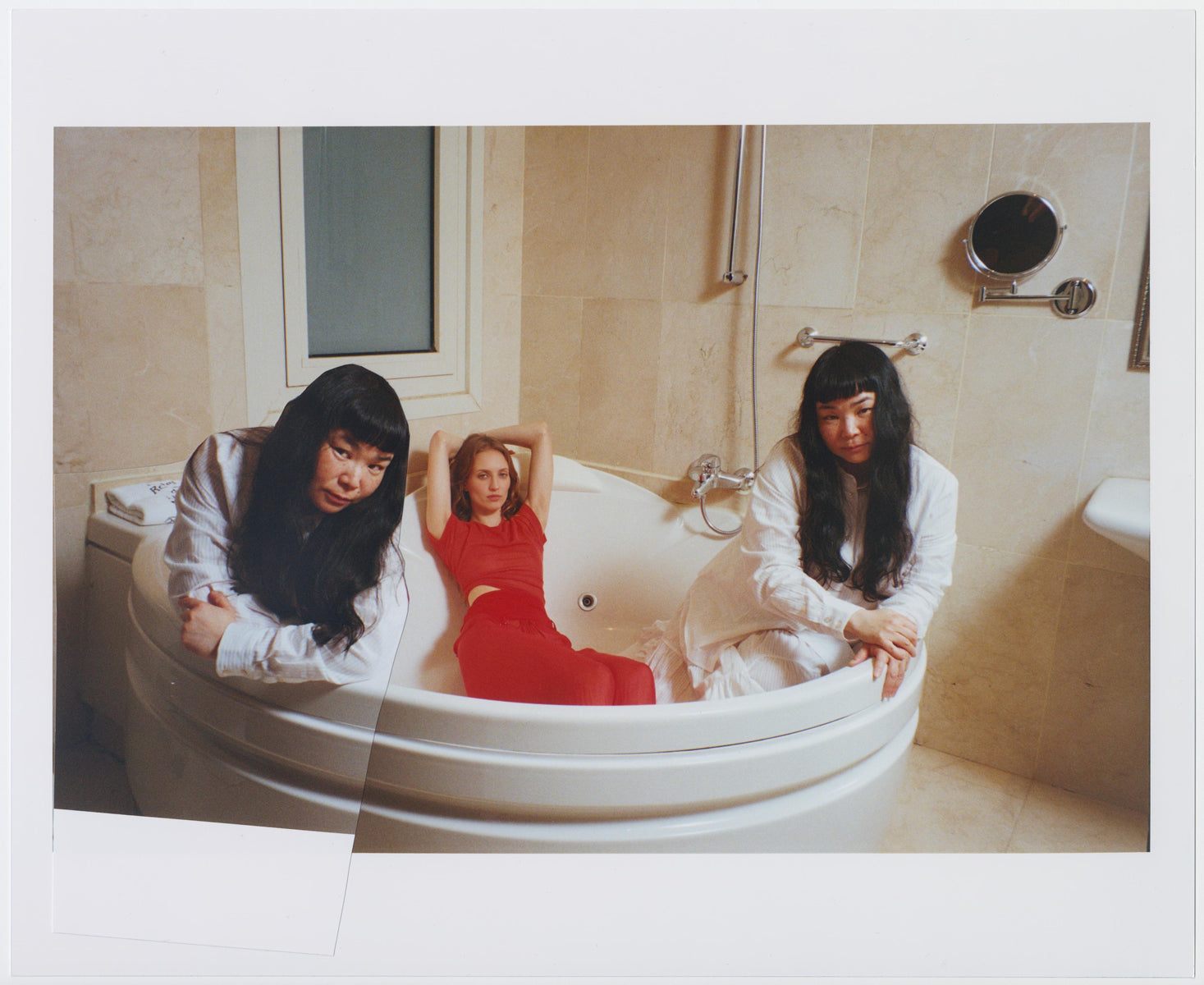
Do you think your generation had a different relationship with images than later ones, especially with the rise of selfies and social media?
My generation didn’t grow up with selfies. Self-portraits were something only artists did. Showing your personal life in photos was rare, and there wasn’t a system for it. When iPhones and social media became popular, I was shocked that everyone started sharing their lives and faces. It was overwhelming, and I felt like all these people were my rivals. I hesitated to join Instagram, unsure how to balance selfies and artistic expression. I was also uncertain about using my phone to take pictures and selfies for my artistic work. It was a difficult time.
Your photos look familiar and domestic, like the ones from a family album. At the same time, you alter your photos, almost altering reality, too. Where does this come from?
It comes directly from my father’s tradition of making family albums. We lived in Brazil when I was a kid, from 1976 to 1982. I was eight when we returned to Japan, and I missed my life in Brazil. I became obsessed with our family albums from Brazil, and I wanted to revive all those memories. I like these pictures where your parent asks you to stand in a specific pose, which I like doing in my work. My father still does his albums, but I don’t. I use my iPad for my personal pictures. My photobooks are my albums, but it’s just me and my twin; they are fake albums. I don’t want to show photos of my parents; I don’t want to show my actual reality that much. When it comes to showing my pictures, there is always a moment for me to decide what is work and what is private.
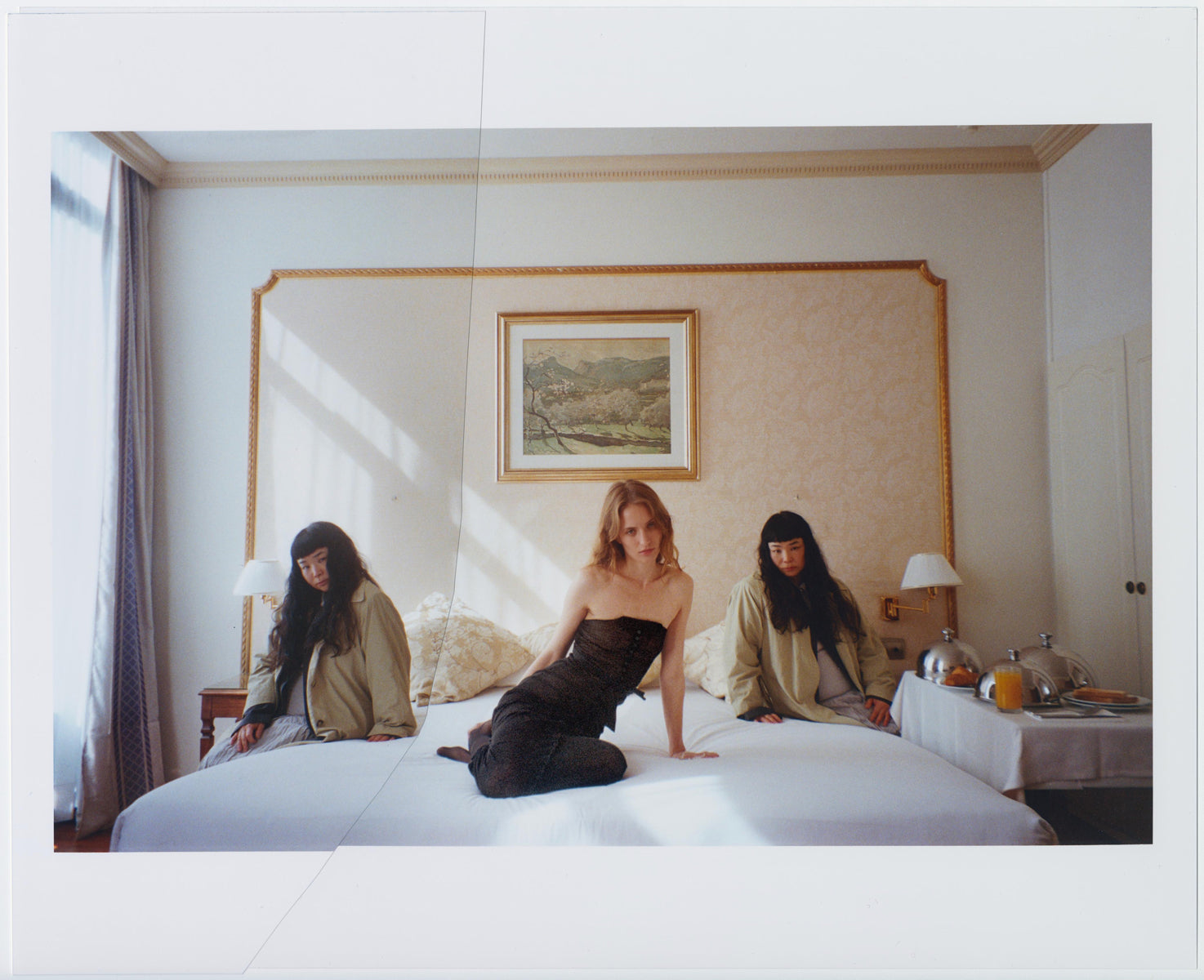
Do you ever plan your trips or work based on your photography, like when you travel to new places?
I don’t plan them too much. Sometimes, I feel a bit of pressure to create something, but I prefer it when it happens naturally. I take photos when I see something that excites me, but I don’t always share them immediately. I took a trip to Italy a few years ago. Those pictures are still in a box, and I’m waiting for the right time to share them.
You have your personal project and also work as a fashion photographer. How do you navigate these different areas?
I enjoy both now. Personal work allows me to be alone, while commercial work is about collaboration. Whenever I have to do commercial work, I think of it as a picnic with people, food, and drinks. Although I like being a fashion photographer and doing commercial work, it can sometimes be overwhelming, especially when I have to be in front of the camera. Sometimes, I feel like going back to my beginnings.
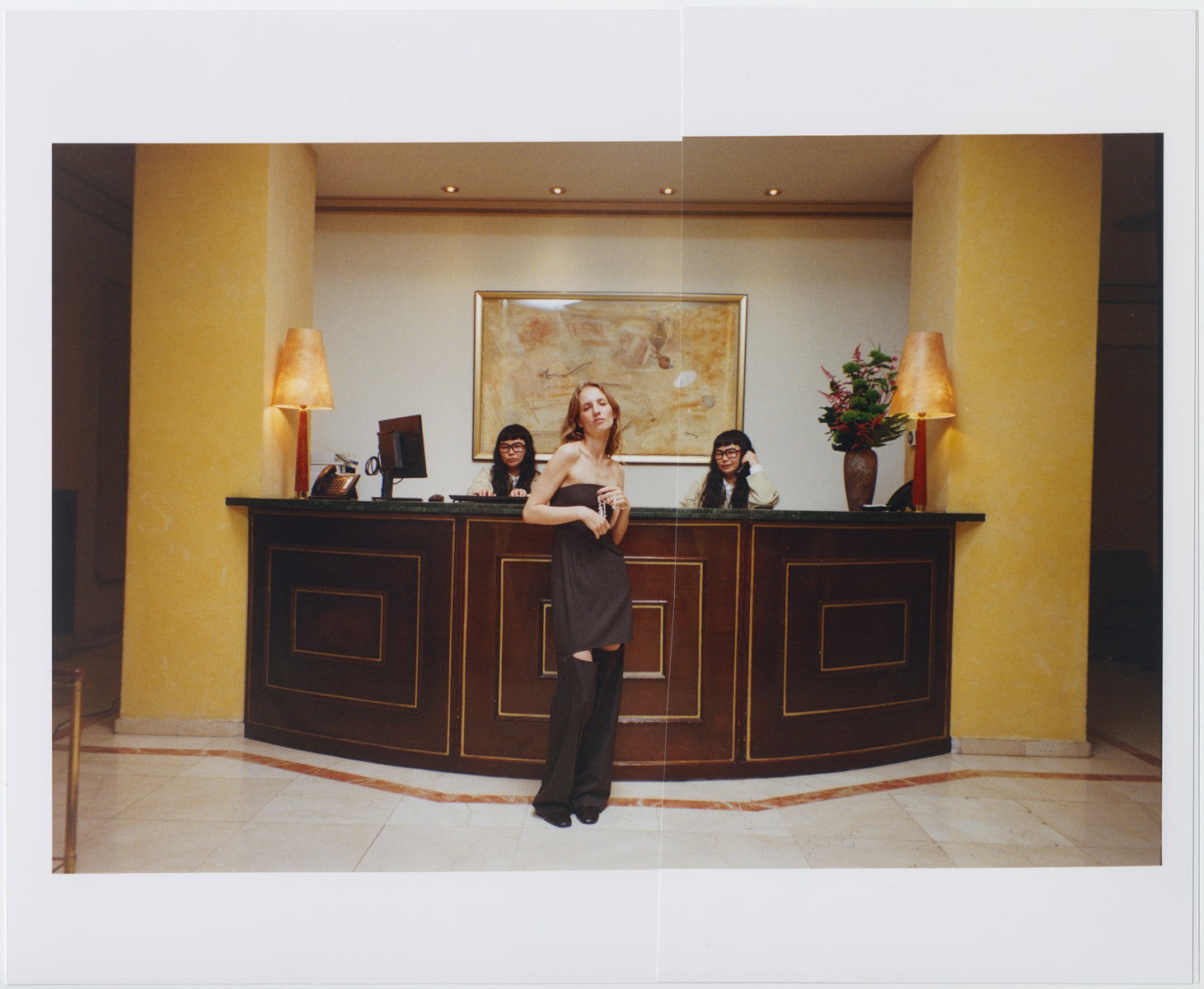
How was the collaboration with paloma wool and the team?
It’s been great working with the whole team. I was nervous when I found out I was shooting Petra, as she’s such an influential photographer. It was really fun to create something with the team. They have so much respect for the creative process, and I could feel this.
Do you have any personal projects coming up?
I'm planning to make a book with pictures of Italy. But I still have to think about how I feel about them. I also want to make one from Spain. I wish I could have stayed longer in Barcelona. I visited a department store and a supermarket. I like to visit those places in each city because you can see the kinds of things they sell in each place. But I just watched; I didn't take pictures, too many people.

Cast Petra Collins, Fumiko Imano Photography Fumiko Imano Styling Emilie Kareh MUAH Manuela Pane Production MAÑANA
Shot in Barcelona, February 2025
